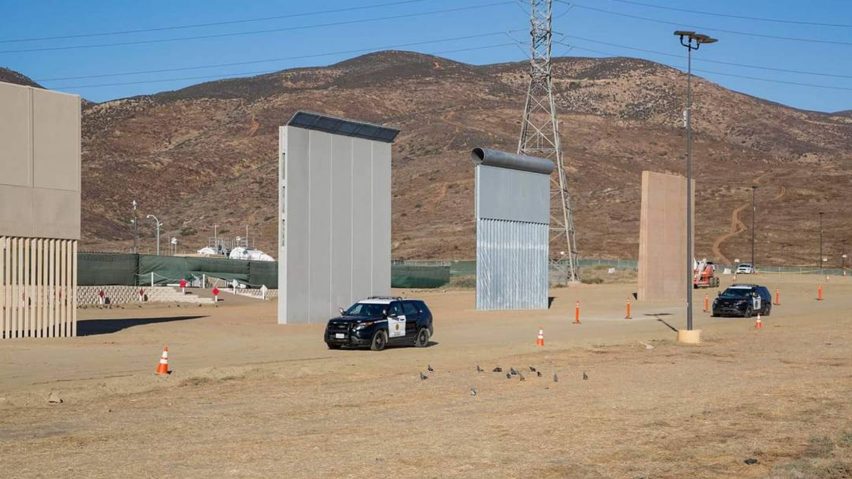Portions of eight proposed designs for the wall that President Donald Trump wants to construct along the US-Mexico border are to be tested over the coming months.
The prototypes, all measuring 30 feet (9.1 metres) tall, have been constructed at a site close to the existing border fence south of San Diego, California.
Starting next month, they will be subjected to attacks from sledgehammers, pickaxes, power tools and other implements. Testers will also try to dig under and scale over the sections to determine how the different designs perform.
"We're going to test them for breachability, for the subterranean aspect," said US Customs and Borders Protection chief agent Roy Villareal, according to the Evening Standard.
Six companies were selected from over 250 by the Department of Homeland Security following open bidding process launched in February 2017 – a month after the inauguration of President Trump, who is seeking to fulfil his campaign promise to fortify the America's southern frontier.
Of the chosen prototypes, four are made primarily from concrete – as specified in an early tender – while four more are built from other materials.
They include two designs by Alabama-based Caddell Construction, which proposes a concrete wall with a thicker lower portion, and a version with a solid top and a transparent bottom half.
WG Yates & Sons from Philadelphia also has two shortlisted prototypes – one metal and one concrete – while the material used for KWR Construction's partially see-through version is currently unidentified.
Fisher Sand & Gravel's solid concrete barrier, Texas Sterling Construction's suggestion topped with steel mesh and spikes, and ELTA North America's plan that looks like a radiator round off the list.
Cost is also likely to play a determining factor in the decision. A bill recently approved in the House that pledged $1.6 billion (£1.2 billion) towards the wall's construction stalled in the Senate, while Trump's initial claims that Mexico would cover the costs are continually denied by the Mexican government.
The US president also previously said that he himself could "design or negotiate" a cheaper option for the wall if necessary, and later suggested that the design could incorporate solar panels to help foot the bill.

